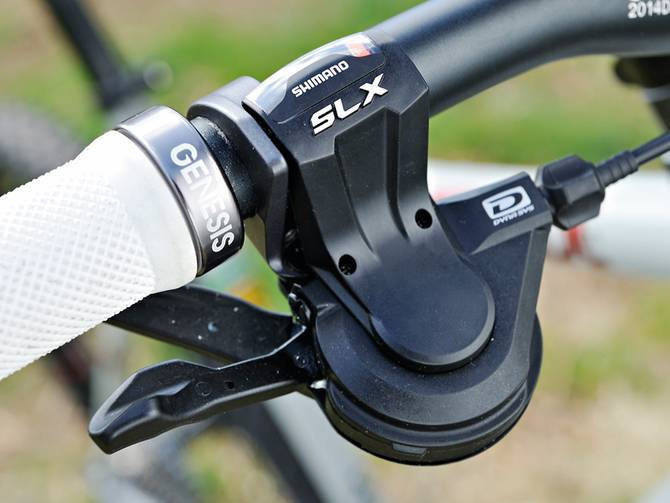Unlocking Smooth Rides: The Role of Gear Shifters in Cycling
When it comes to cycling, gear shifters play a crucial role in enhancing performance, efficiency, and overall riding experience. By providing a seamless transition between gears, gear shifters enable cyclists to tackle various terrains and conditions with ease. Whether riding on flat roads or navigating steep mountain trails, a well-functioning gear shifter system allows riders to maintain a consistent pace, conserve energy, and optimize their pedaling technique. With the numerous types of bike gear shifters available, understanding the importance of gear shifters is essential for selecting the right one for your cycling needs. In this comprehensive guide, we’ll delve into the world of bike gear shifters, exploring the different types, benefits, and considerations for choosing the perfect gear shifter for your bike.
How to Choose the Right Gear Shifter for Your Bike
Selecting the ideal gear shifter type for your bike can be a daunting task, especially with the numerous options available in the market. To make an informed decision, it’s essential to consider several factors, including bike type, riding style, and personal preference. For instance, road bikes typically require gear shifters with a more precise and rapid shifting mechanism, while mountain bikes benefit from gear shifters with a more robust and durable design. Additionally, riders who prioritize comfort and ease of use may prefer electronic gear shifters, while those who value simplicity and low maintenance may opt for mechanical gear shifters. By understanding your specific needs and preferences, you can narrow down your options and choose a gear shifter that enhances your overall riding experience. In the next section, we’ll delve into the different types of bike gear shifters, exploring their unique features and benefits.
Types of Bike Gear Shifters: A Detailed Breakdown
When it comes to bike gear shifters, there are three primary types: mechanical, electronic, and hydraulic systems. Each type has its unique features, benefits, and ideal applications. Mechanical gear shifters, the most traditional type, rely on cables and derailleurs to shift gears. They are known for their simplicity, low maintenance, and affordability. Electronic gear shifters, on the other hand, use battery-powered motors to shift gears, offering improved shifting performance, reduced maintenance, and enhanced ride quality. Hydraulic gear shifters, a hybrid of mechanical and electronic systems, utilize hydraulic fluid to shift gears, providing a smooth and precise shifting experience. Understanding the different types of bike gear shifters is crucial in selecting the right one for your bike, riding style, and personal preference. In the next section, we’ll compare and contrast two prominent gear shifter brands, Shimano and SRAM, discussing their strengths, weaknesses, and ideal applications.
Shimano vs. SRAM: A Comparison of Popular Gear Shifter Brands
When it comes to bike gear shifters, two prominent brands stand out: Shimano and SRAM. Both brands offer a range of gear shifter options, each with its unique features, benefits, and ideal applications. Shimano, known for its high-quality and durable components, offers a wide range of mechanical and electronic gear shifters, including the popular Ultegra and Dura-Ace series. SRAM, on the other hand, is renowned for its innovative and ergonomic designs, offering a variety of mechanical and electronic gear shifters, including the popular Red and Force series. When choosing between Shimano and SRAM, riders should consider factors such as shifting performance, durability, and compatibility with other bike components. For instance, Shimano’s Di2 electronic gear shifters are known for their precise and rapid shifting, while SRAM’s eTap electronic gear shifters offer a more intuitive and customizable shifting experience. By understanding the strengths and weaknesses of each brand, riders can make an informed decision and select the ideal gear shifter for their cycling needs.
Understanding Gear Shifter Compatibility: A Guide to Mixing and Matching
When selecting a gear shifter, compatibility is a crucial factor to consider. Ensuring that the gear shifter integrates seamlessly with other bike components, such as derailleurs, cassette, and chainrings, is essential for smooth and efficient shifting. Incompatible components can lead to poor shifting performance, reduced durability, and even safety issues. To avoid these problems, riders should consider the following factors: component compatibility, cable and wire compatibility, and mounting system compatibility. For instance, Shimano’s Di2 electronic gear shifters are designed to work specifically with Shimano’s Ultegra and Dura-Ace components, while SRAM’s eTap electronic gear shifters are compatible with SRAM’s Red and Force components. By understanding the compatibility requirements of different gear shifter brands and models, riders can ensure a hassle-free and enjoyable ride. Additionally, consulting with a professional bike mechanic or doing thorough research can help riders make informed decisions and avoid compatibility issues.
The Benefits of Upgrading to Electronic Gear Shifters
Electronic gear shifters have revolutionized the cycling industry, offering a range of benefits that can significantly enhance the riding experience. One of the most significant advantages of electronic gear shifters is their improved shifting performance. With electronic shifters, riders can enjoy rapid and precise shifting, allowing for seamless transitions between gears. This is particularly beneficial for riders who frequent varied terrain, such as mountainous or hilly routes, where quick and accurate shifting is crucial. Additionally, electronic gear shifters require minimal maintenance, as they eliminate the need for cable adjustments and lubrication. This not only saves time but also reduces the risk of mechanical failures. Furthermore, electronic gear shifters can provide real-time data and feedback, allowing riders to optimize their performance and make data-driven decisions. For instance, Shimano’s Di2 electronic gear shifters offer synchronized shifting, which enables riders to shift gears simultaneously on both the front and rear derailleurs, resulting in improved efficiency and reduced fatigue. Overall, upgrading to electronic gear shifters can significantly enhance the riding experience, providing improved performance, reduced maintenance, and enhanced ride quality.
Troubleshooting Common Gear Shifter Issues: Tips and Tricks
Despite their importance, gear shifters can be prone to issues that can disrupt the riding experience. Fortunately, many common gear shifter problems can be easily resolved with some basic troubleshooting and maintenance. One common issue is misaligned derailleurs, which can cause poor shifting performance and wear on the components. To resolve this, riders can adjust the derailleur’s limit screws to ensure proper alignment. Another common problem is worn-out cables, which can cause shifting to become sluggish and unreliable. Replacing worn-out cables with new ones can resolve this issue. Faulty shifters can also be a problem, but often, cleaning and lubricating the shifter’s pivot points can resolve the issue. Additionally, riders can try resetting the shifter’s indexing to ensure proper shifting. By being aware of these common issues and knowing how to troubleshoot them, riders can minimize downtime and ensure a smooth, efficient ride. It’s also essential to regularly inspect and maintain the gear shifters to prevent issues from arising in the first place. By doing so, riders can enjoy a hassle-free ride and optimize the performance of their gear shifters, whether they are using mechanical, electronic, or hydraulic systems – the various types of bike gear shifters available.
Conclusion: Finding the Perfect Gear Shifter for Your Cycling Needs
In conclusion, mastering bike gear shifters is crucial for a smooth, efficient, and enjoyable ride. With the various types of bike gear shifters available, including mechanical, electronic, and hydraulic systems, riders have a range of options to choose from. By understanding the importance of gear shifters, selecting the right type, and ensuring compatibility with other bike components, riders can optimize their performance and efficiency. Additionally, upgrading to electronic gear shifters can provide improved shifting performance, reduced maintenance, and enhanced ride quality. By being aware of common gear shifter issues and knowing how to troubleshoot them, riders can minimize downtime and ensure a hassle-free ride. Ultimately, finding the perfect gear shifter for your cycling needs requires careful consideration of your bike type, riding style, and personal preference. By following the tips and guidelines outlined in this article, riders can make informed decisions and take their cycling experience to the next level.






